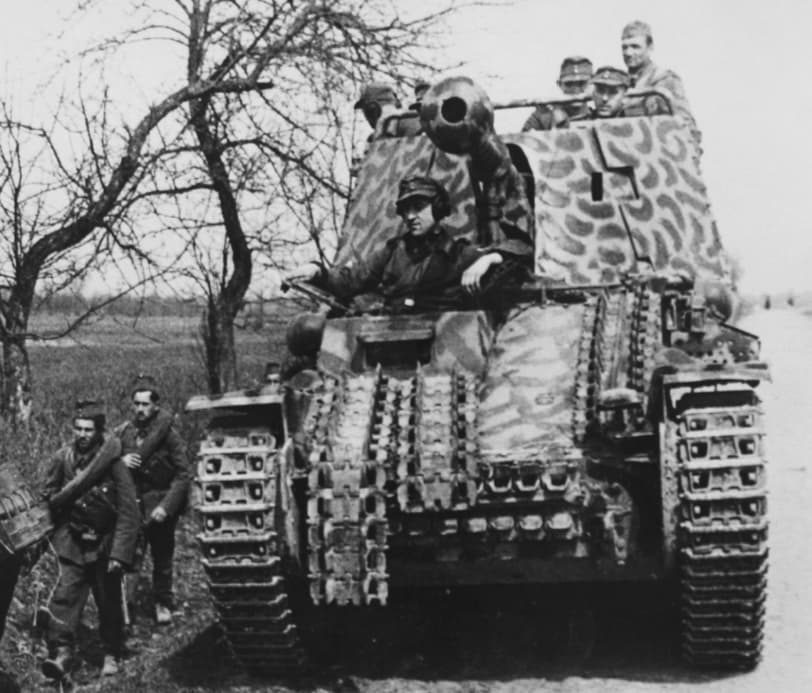- Yes
- No
I would like to suggest the Marder III Ausf.M as a sidegrade to the allready in game Ausf.H.
In game it would offer greater mobility (higher top speed, less weight), some greater survivability, duo to engine in the middle, but mainly be a sidegrade as a quite well known vehicle. But also offering some more protection.
History:
The Marder III Ausf.M is the reworked improved variant to the Ausf.H with in this case the letters M and H not beeing in actual alphabetical order, instead standing for the location of the engine. M → Mitte → middel, H → Hinten → at the back. The main change from M to H, is as written above the new ligher (and less armored), instead of the standart Pz 38 (t) hull, with stepped front, the sloped front hull with middle engine was used. This new reworked middle engine Chassis, was of a universal designe, build with the development from the previous chassises of Marder I, Wespe and was used for the Flakpanzer 38 (t), 15 cm s.I.G. on the Ausf.M chassis, as well as a multitude of Munitionspanzer 38(t).
This chassis with the fighting compartment at the back had more space to work, as such the 3rd crew member could be there instead of the hull, with more space to work with.
Overall, during the Invasion of the Soviet Union and in North Africa, it became clear that the currently in usage found AT guns were starting to struggle against the heavyer armored tanks, especially over range, where even the Pzgr.40 wasnt of help. As such with further development, the 7,5 cm Pak 40 L/46 was developed upon the previous (small production run) 7,5 cm K. L/41 (on 4 Selbstfahrlafette L/41 and 2x Pz.Sfl.II 7,5 cm K. L/41 as well as 1x StuG III Ausf.F Prototype and on the Panzerzug 3). The Pak 40 was used till the very end of the war and was very effective as well as usable in an Anti infantry roll, however, just like other ever bigger guns, the Pak 40 had a drawback, beeing heavy, and either towed or pulled by horses. This limited its mobility and tactical speed. It had trouble keeping up with the front line, only really worked in prepared locations or defencive locations.
As such these guns, at the beginning were put on modified captured and outdated hulls creating SPGs such as the Marder I on the Lorrain Schlepper (f) and more. While these were rather thinnly armored and not ideal for the roll of the StuG, they were mobile, could follow the tanks and had great firepower as well as could effectively used for ambushes. While intended as a stopgap for more armored vehicles such as the StuG III F-G with StuK 40 L/43/48 guns, there never were enove and the Stopgap was still in production as main SPGs, with 942 produced of the Marder IIIs.
Befor the Marder III Ausf.M came, there were multiple models befor it, which all resulted in this reworked development, including but not limited to the Marder I (Lorrain Schlepper (f)), Marder II, first with 7,62 cm Pak 36 (r) on the Pz II Ausf.D and E hulls, as well as 7,5 cm Pak 40 on the Pz II Ausf.C and F hulls. With a mix of hulls of standart layout as well as layouts with engines in the middle.
Among the above mentioned advantages this designe has the advantages of:
- big fighting compartment, not limited by the engine
- lower profile
- better access
The Gun:
7,5 cm Pak 40/3 L/46 and AA/GP Mg 42/34
-8° to + 6° Elevation, 50° Traverse, 38 rounds storage
Ammo Types: Apcbc, Apbc, Apcr, He, Smoke, Heat (Click to show)
Ap:
Pzgr.39 (Apcbc) 6,8kg 17g H.10 (28,9) 792m/s 152mm/10m
(Later by Tactical and Technical Trends No.21-30 US War Department, the velocity was even increased to 2800fps/853,44m/s, to be in line with the 8,8 cm Flak in terms of Penetration.)






Pzgr.40 (Apcr) 4,1kg 28x111mm 0,9kg Core 990m/s 192mm/10m


Pzgr.40(W) (Apbc) 4,1kg solid 990m/s 132mm/10m
(Used till 1000m as cheaper alternative to Pzgr.39 and Pzgr.40, better velocity made it easyer to aim, flat block face meant its a bit better against angle, its made from softsteel, deforms instead of penetrates armor, better against harder armor. There is a difference between Pzgr.40(W) and Pzgr.40 (Üb).)




Gr.38 Hl/B (Heat (No Tracer)) 4,57 kg 513g H.5 (872,1g TnTa) 450 m/s 87mm/10m




Gr.38 Hl/C (Heat) 4,8 kg 515 g H.10 (875,5g TnTa) 450 m/s 115mm/10m
(Early no tracer, implemented during production.)





He:
Sprgr.34 (He (No Tracer)) 5,74 kg 725g Fp.02 und Np.10 (928g TnTa) 550 m/s




Utility:
K.Gr. Rot Nb (Smoke (No Tracer)) 6,2 kg 95g Pent 540m/s

The Vehicle:
Marder III Ausf.M
Dimensions: 5,02m / 2,15m / 2,35m
Armor: 10-15mm (20mm for the Drivers Hood) Additional hull Track add on armor
Weight: 10,15 ton
Engine: 150 Ps / 2800 rpm
Speed: 47 km/h
Crew: 4
Source:
Panzer Tracts No. 7-2
Panzerjäger in Action (U.Feist and M.Dario)
Geschossringbuch I
Munition der 7,5 cm Pak 40
German Military Vehicles (D. Doyle)
Waffentechnik im Zweiten Weltkrieg (A. Lüdeke)



















